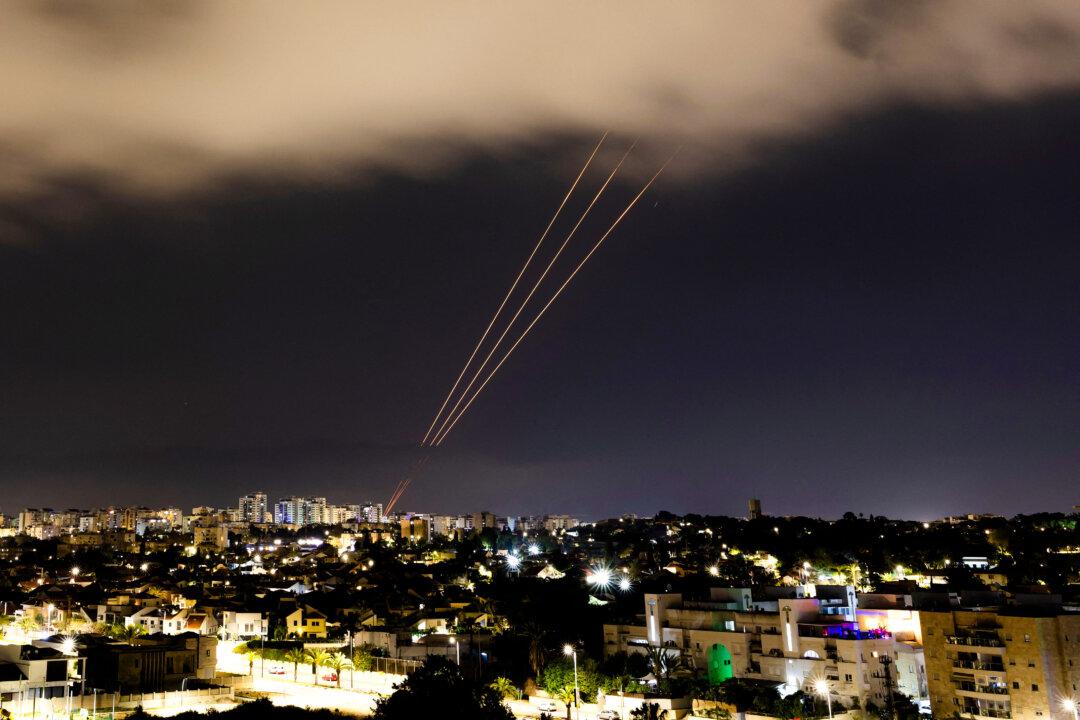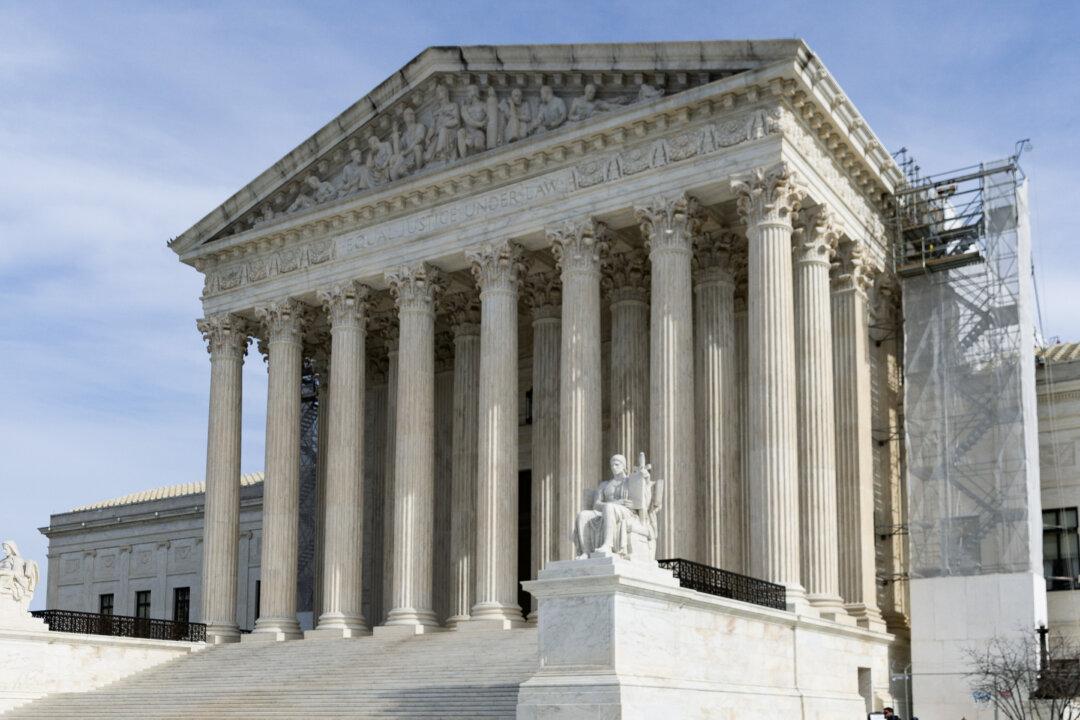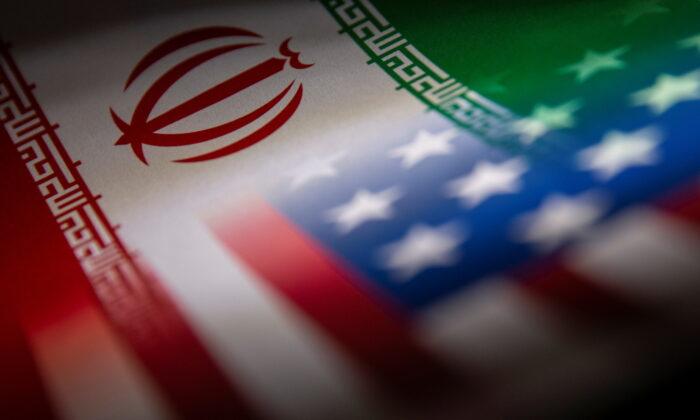Commentary
Chinese Communist Party (CCP) leaders made their position known early and often in word—hitting their Biden administration counterparts with a barrage of anti-American invective at the infamous March 2021 Anchorage, Alaska, “reset” meeting—and deed—
flexing their muscles months later with a nuclear-capable hypersonic missile test.
For its part, the Biden administration has rewarded the CCP for its malevolence and invited still more aggression not only in its weak and flat-footed responses, but also in its actions. It has let the People’s Republic of China (PRC) off scot-free for its central role in the coronavirus pandemic and—seemingly at the request of its regime—
cut sweetheart deals to dispose of criminal cases against prominent Chinese nationals, and
killed the FBI’s critical counterintelligence program, the China Initiative.
So, few should have been surprised that Beijing saw fit to brazenly violate America’s airspace on the eve of a high-level meeting between Secretary of State Antony Blinken and CCP General Secretary Xi Jinping, sending a spy balloon the PRC
patronizingly claimed was meteorological, of the kind capable of
delivering an electromagnetic pulse weapon or
hypersonic missile that could cause catastrophic damage, soaring over our most sensitive sites. This was a demonstration of strength that also almost assuredly aimed to
probe—to test our reflexes and resolve.
Nor should anyone have been surprised that the Biden administration failed this test. But baffling aspects of its frequently-shifting response raise questions perhaps more troubling, and revealing, than whatever information the balloon might have beamed back to China before being blasted out of the sky, and its leaders might have gleaned about our intelligence and
defensive capabilities.
Here are five such lingering questions:
Would the Biden Administration Have Ever Shot Down the Spy Balloon Had American Civilians Not Seen It?
According to
Bloomberg, Biden administration officials were aware the Chinese balloon had entered U.S. airspace several days before the public, but were intent on “keeping it on the down-low” with Secretary Blinken’s “high-profile trip at stake.”
Administration officials were reportedly concerned about “a heated political environment ahead of 2024 elections, with Republicans agitating on which party could strike a harder or tougher line on China.”
In other words, Team Biden was keeping the breach of our sovereignty hush-hush for political reasons. Montanans foiled the Biden administration’s plans when they identified the balloon, causing the administration to form a response.
The Pentagon trotted out spokesman Brig. Gen. Patrick Ryder, who sought to
reassure Americans that the balloon “does not present a military or physical threat to people on the ground.” A senior defense official added that the balloon had “limited additive value from an intelligence collection perspective.” The implication then was that this was
no big deal—a position reinforced by claims such breaches of our sovereignty by China had happened before, including under President Donald Trump.
Biden himself, only after the balloon was shot down,
stated that “It was always my position” to strike it, and that once the balloon floated over “the United States from Canada, I told the Defense Department I wanted to shoot it down as soon as it was appropriate.”
One can’t prove a hypothetical, but that the Biden administration didn’t shoot down the spy balloon the second it entered our airspace, that the initial reporting on White House deliberations emphasized its political focus, and that the administration downplayed the danger of the balloon and cast the incursion as something of a commonplace occurrence, call into question the president’s candor in saying he always intended to strike it down.
Why Did the Biden Administration Let the Balloon Traverse the Entire United States?
The Biden administration’s rationale for not shooting down the balloon upon its entry into our airspace —that it feared damage to those on the ground—strains credulity, particularly when one considers that it made that case when it was known the balloon was traveling over the third most sparsely populated state by density in the country. Does America truly lack the capability to safely pop a balloon over a state with fewer than eight people per square mile? One also wonders if forces could have intercepted or otherwise brought the balloon down without causing damage to it for observation and study.Instead, the Biden administration let the vehicle complete a mission of sorts in canvassing the country unmolested, surely to China’s delight. That it was shot down, sending its pieces flying, only after it had emerged off the shore of South Carolina over the Atlantic Ocean, necessitated a seemingly complex recovery effort both on the water’s shifting surface and beneath it. According to the
Defense Department, “it’s possible that some debris could escape notice and wash ashore.”
Does the Biden Administration’s Related Assertion That There Was a National Security Benefit to Letting the Balloon Fly Really Hold Water?
Two days after the balloon was shot down—that is, retrospectively—NORAD Commander Gen. Glen VanHerck claimed that there was a national security benefit to permitting the balloon to float over the United States. Doing so,
said Gen. VanHerck, gave intelligence officials “the opportunity to assess what they were actually doing, what kind of capabilities existed on the balloon, what kind of transmission capabilities existed.”
But did the benefits really outweigh the costs—including that China of course also observed our response? Could officials not have assessed the balloon’s capabilities at any point during its flight over the United States and then promptly shot it down, rather than risk potential compromise of our military sites? Was this really an intelligence coup for America, or is the administration deploying this narrative to save face—to try and bolster its curious argument that it spared the balloon until it crossed the country on public safety grounds?
Did American Forces Really Fail to Detect Previous Balloon Breaches, or Did Officials Conceal Them From Their Superiors?
Among the suspicious aspects of the Biden administration’s response, which calls into question its overall candor on the Chinese spy balloon, was its shifting message about such Chinese operations. While claiming the balloon didn’t pose a threat originally, sources also noted—unbeknownst to virtually every Trump administration national security principal questioned about it—that such balloon incursions had happened during the former president’s tenure too. Later, officials indicated that those incursions went undetected in real-time.Getting the truth about what our leaders knew about these spy balloons, when they knew it, and who was in the know, is imperative. If past balloons evaded America’s air defenses—as
seems to be the case—that calls into question the very integrity of such defenses, irrespective of officials’ claims to the contrary. If America couldn’t detect these balloons historically, what else might we be missing, and what kind of vulnerabilities does this blindness create?
If such balloons were detected, and top administration officials during the Trump years up to and including the president himself were kept in the dark—for any reason whatsoever—this would be an unconscionable act of insubordination.
The importance of getting to the bottom of all this is only underscored by the fact that now the Biden administration is
acknowledging that China’s spy balloon program is expansive and national security-threatening.
What Did Gen. Milley Know, When Did He Know About It, and What If Anything Did He Communicate to His Chinese Counterparts?
Gen. Mark Milley, chairman of the Joint Chiefs of Staff, is reportedly among those who urged Biden not to shoot down the spy balloon as it floated over America. It’s
odd that he, Defense Secretary Lloyd Austin, and others seemed to take a less aggressive position than Biden is reported to have favored, given the military’s generally more hawkish posture than that of the president.
In any event, Gen. Milley’s position is worthy of particular scrutiny given what we know about his posture towards China. Recall that in the waning days of the Trump presidency, he arguably subverted the chain of command, and treacherously so, in telling his Chinese counterpart that “We are not going to attack or conduct any kinetic operations against you.” He reportedly added, “If we’re going to attack, I’m going to call you ahead of time. It’s not going to be a surprise.”
Gen. Milley claimed that he was seeking to defuse any potential hostilities between the United States and China—that intelligence indicated China believed a U.S. attack might be imminent. But can anyone imagine Trump directing an underling to let a top Chinese general know that if America was going to attack, we would give fair warning? In fact, Trump
said he was wholly unaware of such calls, and that if reporting was true, Gen. Milley should be tried for treason. It’s worth noting that, in the past, Gen. Milley has
said that China “is not an enemy.”
Congress ought to question Gen. Milley about his role in the balloon bungle, what he might have communicated to his Chinese counterparts, and whether he acted in America’s national interest.
Views expressed in this article are opinions of the author and do not necessarily reflect the views of The Epoch Times.





